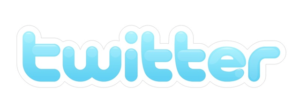Press releases are still important methods for disseminating information to key target audiences. Though social media has evolved into viable methods to reach desired audiences, the press release is not dead.
The Release Date
This is the date your release is distributed. Many feel the date is important because it can indicate whether the release is current or newsworthy. Many media outlets want to be the first to report on what is newsworthy.
The Body – Who, What, When, Where and Why
Media outlets are very busy and don’t have time to research additional information on the release topic. The body of the press release is going to have the important information they need when deciding to share the story. The more information provided, the less work will be required and the happier they will be.
The lead-in paragraph should briefly detail the press release purpose. It should include the five W’s – Who, What, When, Where, and Why.
- Who or What is the press release about?
- If it’s about an event, When does it take place?
- Where does it take place?
- Why is this newsworthy or why is it happening?
When sending your release, stick to the facts. You don’t want to overdo it with technical or industry jargon. If the information is difficult to understand, it may wind up in the “circular” file.
The second paragraph should provide additional supporting information, such as details about the people, products, services related to this news item.
If the press release is not about you and your business, but about your client – make sure the company name, contact information, address, telephone numbers, website URL, and any other information that will help the reader if there are questions.
Important tips:
- Proofread, proofread, proofread… and get someone else to proofread your release. I once worked at a newspaper. We were required to have our coworkers read our information. Our biggest fear? To type pubic instead of public.
- Always use correct grammar and punctuation.
- Even though the information has been proofread, still spell check the entire document.
- Never type UPPERCASE letters.
- If you can accomplish the press release in two pages … great. A one page release is even better.
- If available, use pictures and captions. If emailing the press release, be sure to attach the image in the appropriate sized JPG format so the media does not have to contact you later for it. You should include a statement giving them publishing approval and photo credit.
- Do not add into the body or attach any HTML, embedded codes or MP3 audio files. Most will not open the files for fear of computer viruses. If a journalist needs this information, they will contact you. You may include important links that will provide pertinent information.
- As often as necessary, do not attach the press release to the email. For the same reason above, include the release in the “body” of the email.
Always know why YOU are sending the press release. Remember, press releases are for the press or other information distributors, to inform them of an event, new product or service that you want shared with their audience…which is ultimately YOUR audience.



